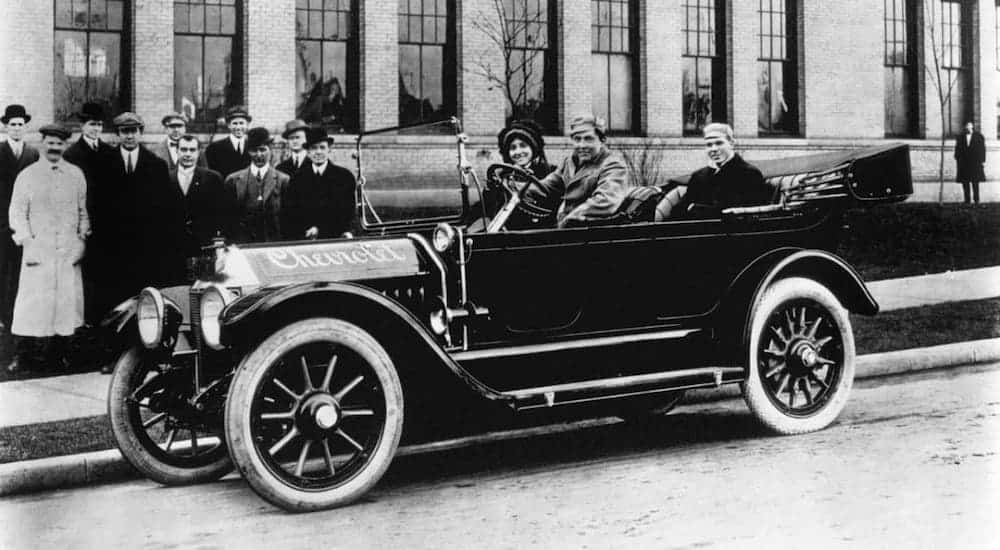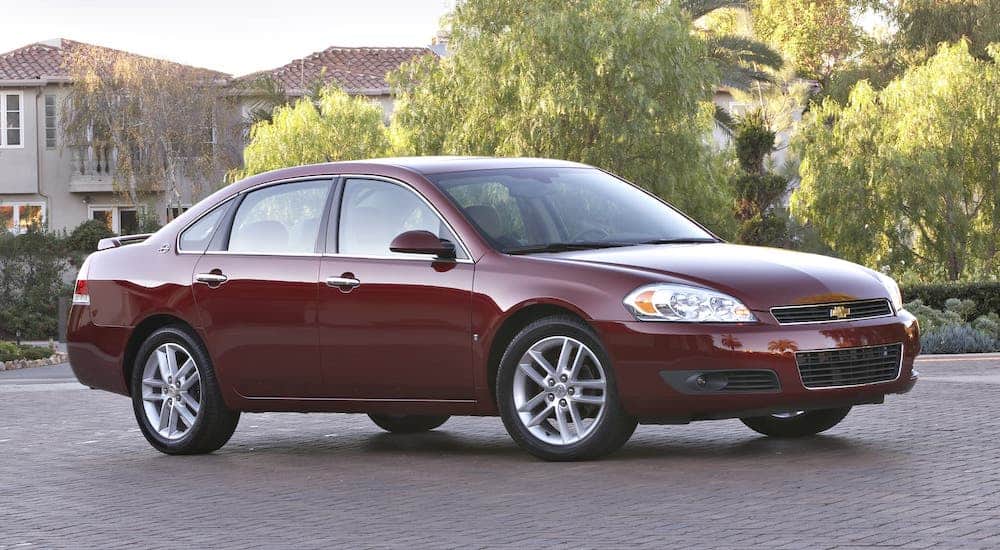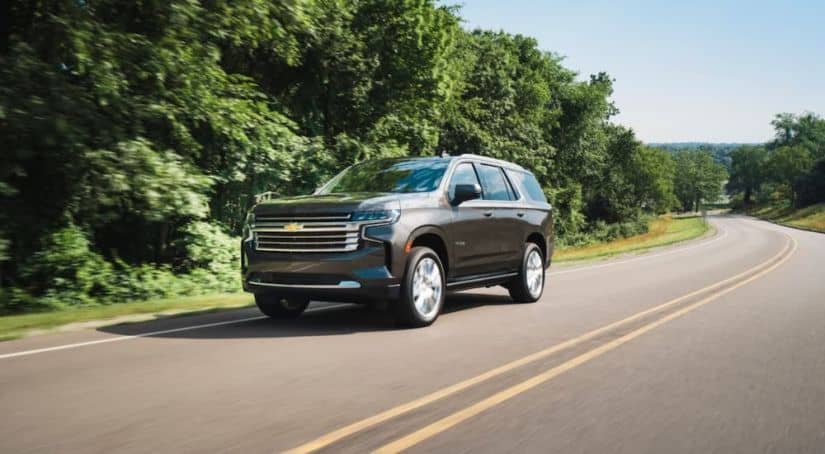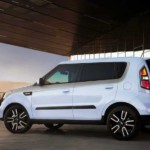Today’s car buyer is focused primarily on which vehicle they want to own. They take a ground-up approach, deciding first on the model, then backtracking to find a dealer and complete the transaction. Let’s say you decide, “I want a Chevy Tahoe.” Your next question is likely going to be, “where is there a GM dealer near me?”
In the past, families chose their vehicles based on the manufacturer they trusted most. There were Ford guys and Chevy guys, but rarely were there Taurus guys or Tahoe guys. It’s a big departure from the mindset of simply trusting a brand and committing to that brand, thus making the model a second choice, almost an afterthought. People trusted that their preferred automaker would have a model that worked for them.
Let’s take General Motors. Some may not realize that several different vehicle brands fall under the General Motors umbrella, not just Chevrolet. GM owns Chevrolet, yes, but also Buick, GMC, and Cadillac. The company also owns OnStar, the subscription-based roadside assistance program, and several non-automotive companies as well.
Over the years, General Motors has owned other nameplates. The company has grown, expanded, contracted, and adjusted based on market conditions, the state of the automotive industry, and even the availability of affordable fuel. GM has survived world wars and other difficult times in history and today is a leaner, more efficient carmaker. Still based in Detroit – Motor City – GM continues to build cars that consumers demand.
Let’s take a look at General Motors’ storied history and learn more about how the company has gotten to where it is today. It’s truly a story of American ingenuity and an example of a proud American company that has successfully weathered the ups and downs of the past century.
The Beginnings of GM

General Motors was founded back in 1908 by a man named William C. Durant. Its purpose was to consolidate several different car brands, including Buick, Oldsmobile, Cadillac, Pontiac (first known as Oakland), and several lesser-known nameplates. GM was the first company to release a vehicle with an electric starter, replacing the hand crank and moving vehicle technology forward by leaps and bounds.
Chevrolet joined the range of brands in 1918, and soon the company was consolidated and reorganized into five main brands: Cadillac, Buick, Pontiac, Oldsmobile, and Chevrolet. By 1931, largely due to new leadership and a focus on sales and innovative yearly vehicle style changes, GM became the largest automaker in the world, and was on its way to becoming one of the largest corporations of any kind in the world.
At its zenith, General Motors sold between 40-45% of all new vehicles, an enormous market share that continued to keep the company in the ranks of the largest on the planet. By then, it had acquired several international brands, including Opal and Vauxhall. It was then that GM faced its first hurdle – the influx of Japanese cars to the American market.
GM Faces Stiff Competition
For the first time, in the 1970s, GM found itself facing a very worthy opponent. As gas prices soared and gas shortages plagued the country, General Motors continued to make large, heavy vehicles with big block V8 motors, gas guzzlers that suddenly made no sense to consumers struggling to pay for, or even find, expensive gas. Enter the fuel-efficient Japanese compact and subcompact vehicles.
These Japanese imports came at the perfect time and answered consumer demand for fuel efficiency, a trend General Motors – and other American manufacturers – did not anticipate. As a result, by the 1990s, General Motors was forced to reorganize and close several plants, despite its efforts to compete with new brands like the Saturn, which arrived on the scene in the mid-80s.
As GM slowly adapted to consumers’ changing demands, the company made a recovery and began again to acquire other brands. In 2000, Saab joined the GM family of vehicles, and GM purchased shares of Fiat, Isuzu, and Suzuki. It dropped Oldsmobile in 2004 in an effort to further consolidate and focus on what consumers want, but despite its efforts, just after the turn of the century, Toyota Motor Company took GM’s place as the world’s largest automaker.
General Motors Files Chapter 11

In 2009, which would become one of its lowest points in history, General Motors was forced to file Chapter 11 bankruptcy. Within this time, then President George W. Bush orchestrated a rescue plan for the “Big 3” automakers – Ford, Chrysler, and GM – in order to keep them in business. Competition from foreign automakers had decimated American carmakers, and lackluster automotive design pulled demand away.
The Federal Government created a controversial Troubled Assets Relief Program (TARP), which made several billion dollars available for relief. This aid supported the automakers during the reorganization process and kept them in business. Several provisions built into the loans required General Motors to demonstrate an ability to become self-sufficient within a set period of time.
During this reorganization, General Motors discontinued its Pontiac and Saturn lines and divested from several other auto brands and unrelated companies in the finance and defense industries, returning to the brands it currently holds today – Chevrolet, GMC, Buick, and Cadillac. By 2011, General Motors once again took its place as the largest automaker in the world, which was quite an accomplishment given its bankruptcy ordeal.
While some still believe foreign automakers have the corner on quality, today’s General Motors Corporation is producing vehicles that not only compete with imports, but in many cases, are far superior. In addition, GM is proudly American, and its long history – dating back to 1908 – cements it as a part of American history and the success of industry and manufacturing in our country.
GM was the largest automaker on the planet for nearly 77 years and today earns its spot as the venerable company that it is. The company employs roughly 180,000 people globally and is currently run by a female CEO, Mary Barra. The company participates robustly in philanthropic causes, including donating to the Nature Conservatory, supporting engineering education at universities, and through its General Motors Foundation, has given millions to charitable causes.
Today you’ll find current versions of some of the company’s most famous nameplates, including the beloved Suburban and the Corvette, while other perennial favorites have been dropped in order to align vehicles with current consumer needs. Cadillac Motor Car Division has seen a complete change in its vehicle lineup. No more will you find the Eldorado or the Seville. Instead, Cadillac offers a CT series of sedans – the smallest CT4 on up to the full-size CT6-V sedan. Cadillac also builds several SUVs, including the popular Escalade.
Cadillac’s transformation exemplifies General Motors’ ability to recreate and reinvent itself and its auto brands. This agility is unheard of in a large corporation, but over time the company has benefitted from successful leadership teams, occasional government support, and getting back to the basics of engineering vehicles that can compete with in-demand imports and, most importantly, that win the hearts of car buyers across the globe.
Today’s General Motors combines the best parts of its long, successful history with a current, modern lineup of automotive brands and vehicles that tick the boxes on buyers’ wishlists. From hybrids to all-electric vehicles to sports cars and full-size SUVs, General Motors has earned its spot as one of America’s most successful companies and carmakers. A proud Motor City tradition that will continue to compete on the automotive landscape for years to come.
When was the last time you visited a GM dealer near you? If you’re in the market for a new vehicle, you might want to stop by your local Chevy, GMC, Buick, or Cadillac showroom. You will be pleasantly surprised by the range of vehicles available and the cutting edge design and engineering built into every single one.



